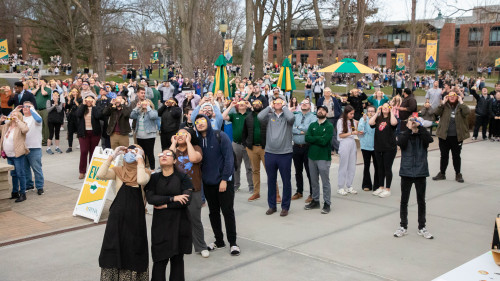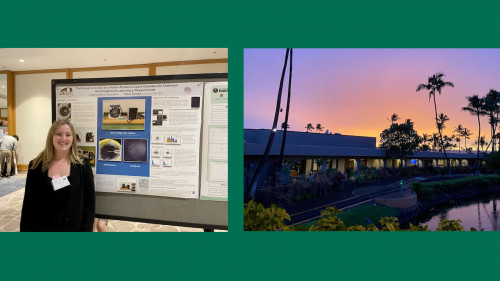
Ranked among the Elite 3% of College’s in America: Siena’s Portal to the Universe
The Wall Street Journal lists Siena 91st on its Best Colleges in the U.S. rankings, which places Siena among the top 3% of institutions in the galaxy. Speaking of galaxies, all eyes in the astronomical world are focused on the Siena Galaxy Atlas.
A new atlas of the heavens created by Siena faculty and students is now part of the public domain and features the College’s name in honor of the scientific team that created it.
The Siena Galaxy Atlas 2020 (SGA-2020) was published by the Dark Energy Spectroscopic Instrument (DESI) Legacy Imaging Surveys team, a large international collaboration of scientists, including faculty at Siena, who have come together to gather some of the sharpest and deepest images of the sky ever taken.
Technically-speaking, the SGA-2020 is an atlas of 383,620 nearby galaxies located over half the sky and observed at several different parts of the electromagnetic spectrum. This American Astronomical Society poster has more detail.
“We’ve been working on this galaxy atlas for some time,” said John Moustakas, Ph.D., associate professor and chair of Siena’s physics and astronomy department. “Nearby galaxies that can be spatially well resolved from our place in the universe provide a unique window into the fossil record of galaxy formation and evolution.”
Moustakas said the atlas “will get an enormous amount of use” – and every time a physicist or astronomer consults it, he or she will see the Siena name. The atlas uses data that has been gathered as part of the DESI project and provides high-quality, detailed images.
The goal of DESI is to help understand “dark energy,” an unknown force discovered in 1998 that appears to be causing the universe to expand faster and faster. By determining the distances of faraway galaxies, DESI scientists are hoping to make some sense of dark energy. Moustakas, Ph.D. has been part of the DESI collaboration since its inception in 2014.
Siena alumni Kevin Napier ‘18, Alissa Ronca ’20 and Luis Villa ’21 also worked on the atlas’ web application. Napier was involved in the early stages of the project when he was an undergraduate at Siena; he is currently pursuing his Ph.D. in physics at the University of Michigan.
“Streamlined access to data is a critical, but all-too-often overlooked part of doing research,” said Napier. “When researchers have data easily accessible, they can much more readily develop sophisticated models and test their hypotheses.”
Napier explained that for astronomy in particular, it is often beneficial to be able to see the images with one's own eyes.
“The Siena Galaxy Atlas will allow researchers to work with and visualize hundreds of thousands of galaxies in a very streamlined manner. I think it will be a useful tool for DESI scientists for many years to come.”

